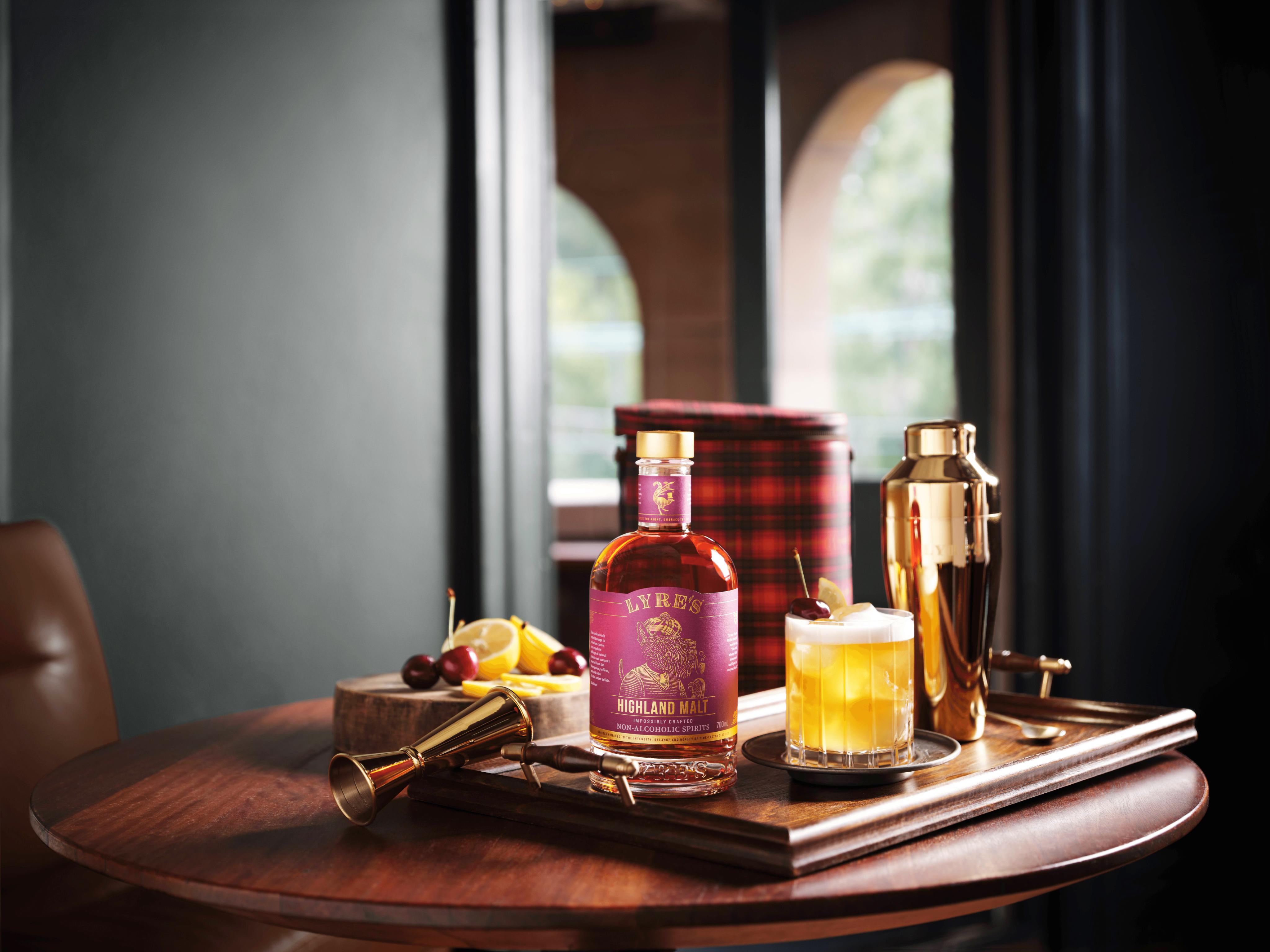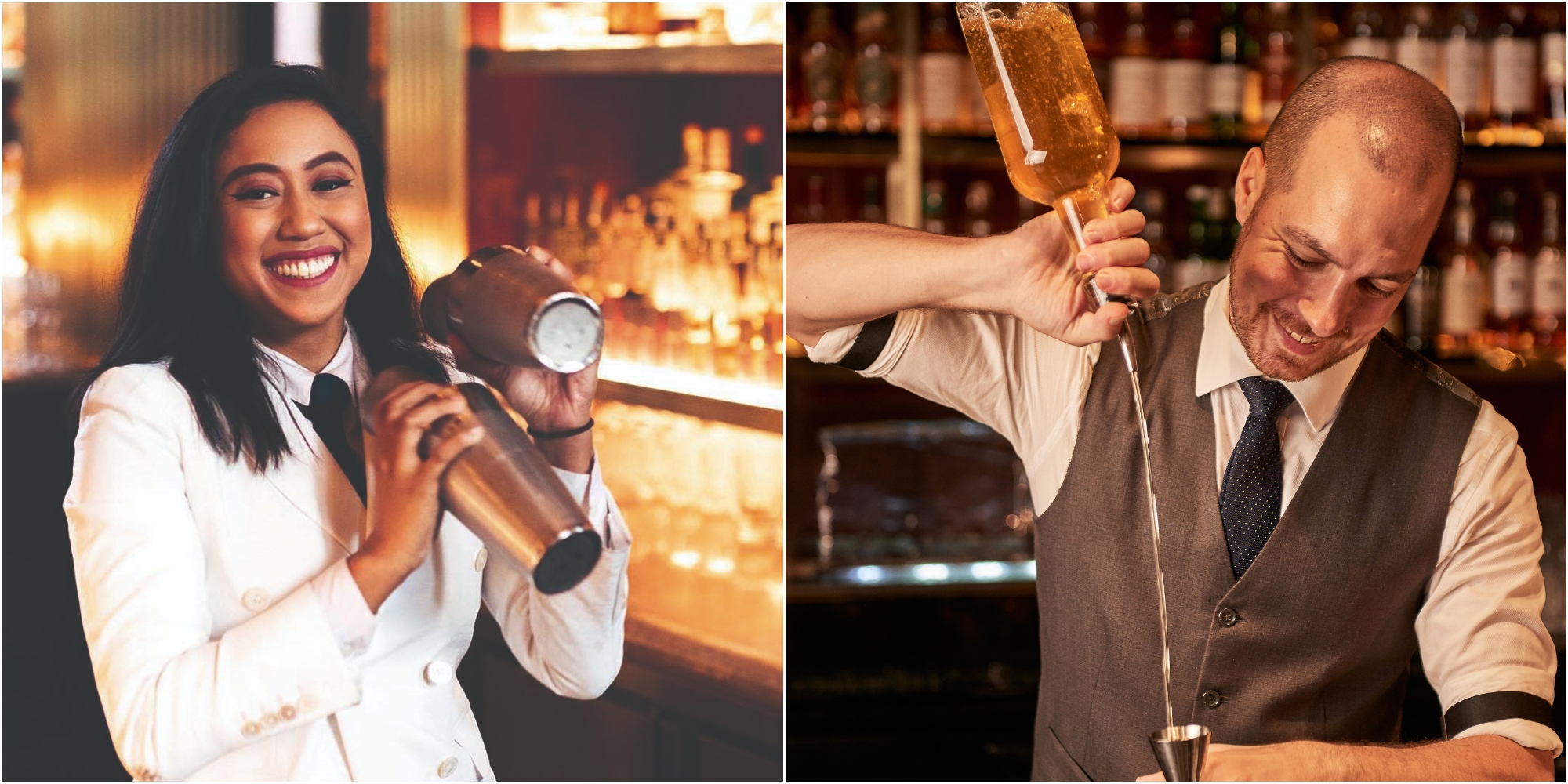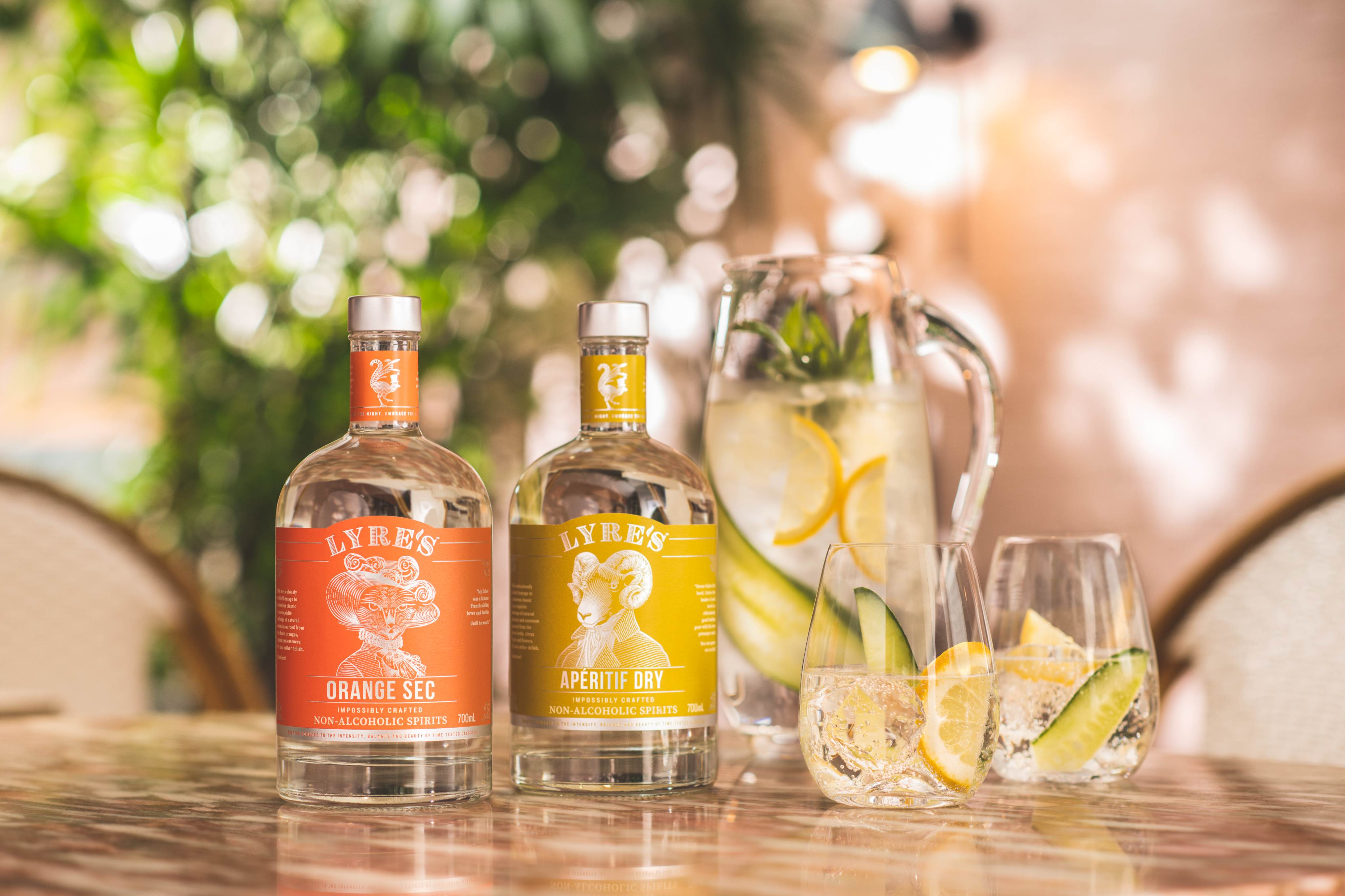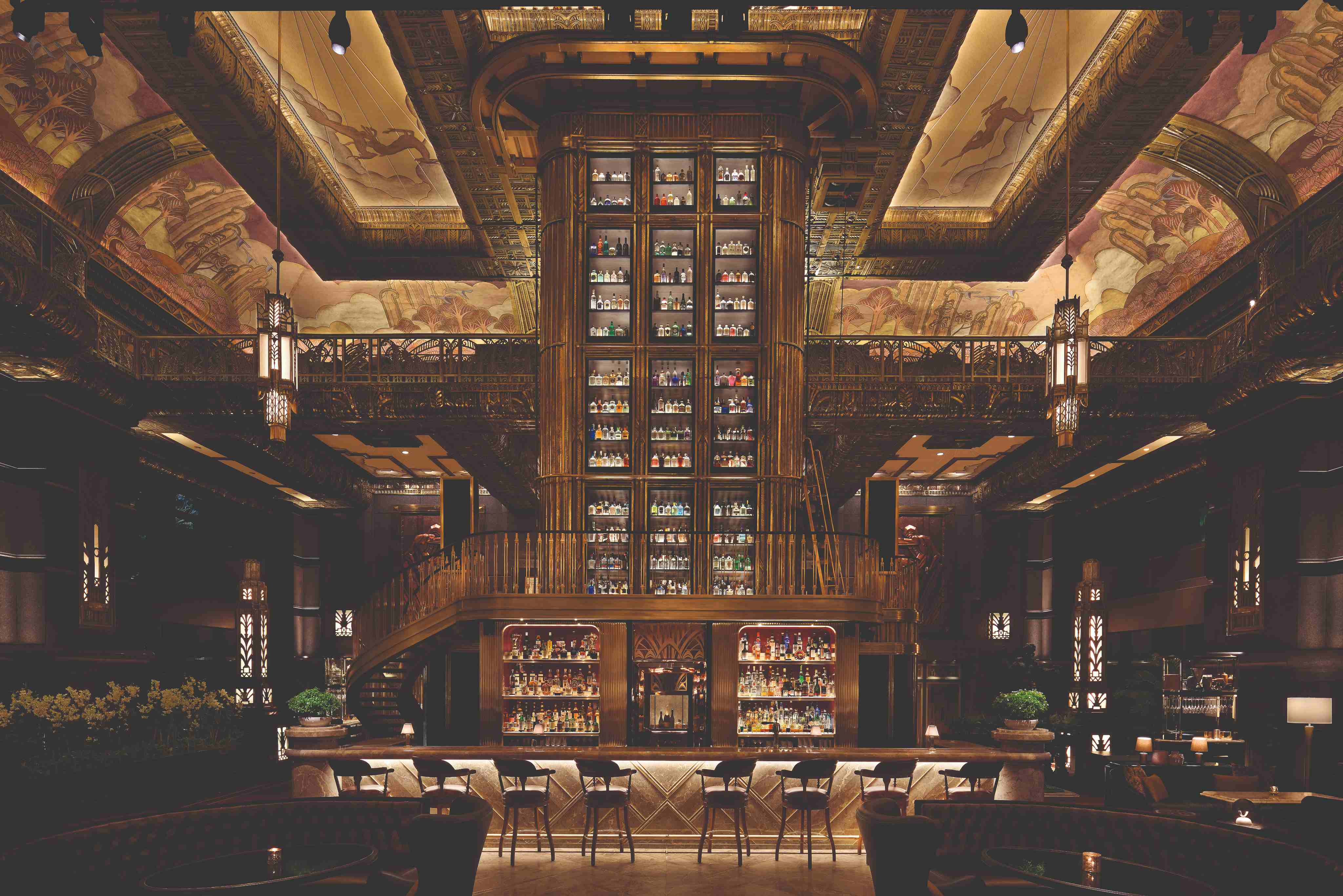The zero-proof cocktail culture is no longer a trend; it’s a worldwide movement worth billions of dollars.

It’s not just about getting drunk anymore,” says Rusty Cerevan, bar manager at Manhattan, Regent Singapore. In his 17- year experience behind the bar, Cerevan has seen it all – from booze-filled nights to the current no- and low-alcohol craze. You could be excused for thinking that this trend, often dubbed the “sober curious movement”, is a Covid-years development that will fade away as people bounce back to their normal life. But that’s not the case. The pandemic years have fueled them with bar closures and the simultaneous self-care and health movement – but now that our lives are back to normal, it refuses to recede. Attributed mainly to the millennials, the “sober curious” is an affectionate moniker for those who have given up on alcohol or are mindful of their intake and drinking much less of it.
According to IWSR consumer research (a leading research body on the global beverage alcohol market), more than half (58 percent) of no- and low-consumers report that they choose to switch between no/low and full-strength alcohol products on the same occasion. Cerevan, however, chalks up the trend to a broader demographic. “I don’t think it’s only millennials,” he says. “Young people do it because it’s trendy. The older people do it because it’s healthier.” At 1920s-inspired Atlas, newly minted head bartender Lidiyanah K or “Yana” has also witnessed an increasing request for non-alcoholic drinks over the last five years and she is not referring to the cloying Shirley Temples and sodas. The city’s high-end bars are delivering well-crafted zero-proof cocktails with premium products, and keeping pace with the top-notch quality cocktails they are renowned for.
Clients who ask for them, Yana says, range from teetotallers, expecting mums, people taking a break from alcohol or professionals who want to appear to be drinking with their clients. At the same time, as a millennial herself, she is noticing a change of attitude. Abstainers are no longer termed “lame” or “outcasts.” Instead, they are hailed with “respect” from their peer group for exercising self-control.

THE RISE OF NON-ALCOHOLIC COCKTAILS
Both Cerevan and Yana credit the non-alcoholic spirits for this proliferation of drinks, like Seedlip and Australia-based Lyre’s which have a wide range of products. “You can truly build an entire bar with them if you want to,” says Cerevan. Lyre’s founder, Mark Livings, created the range when he saw a gap in the market for non-alcoholic versions of drinks. “We launched with 12 non-alcoholic spirits that were designed to work just like the original. Simply by reaching for a different bottle, you could make a non-alcoholic version of a drink you want,” he says. Its portfolio includes the basic building block of classics like Absinthe, Orange Sec, Triple Sec, Dry London Spirit (which mimics gin) and more. Since Lyre’s launch in 2019, the range has expanded to 18 spirits. “We cover around 98 percent of the cocktail list of the world’s most popular 50 cocktails,” he adds.
The Lyre’s range is created by blending natural essences and extracts – flavour and compounds that mimic the spirit or the feel of it, especially that ethanol bite. He explains, “Clearly, we can’t recreate a powerful solvent like ethanol in a beverage, so we turn to the natural world, and we use a number of things like white, black and Sichuan peppers, menthol and ginger.
There’s no shortage of ingredients that we’ve explored to help us synthesise that bite within the beverage. The price tags reflect a chunk of this “bite” as well. Zero-proof spirit-based cocktails are listed for $21–24 at top-end bars, whereas alcoholic cocktails are priced around $25–$28. There is a valid argument around the difficulty and labour-intensive process of extracting flavours from botanicals and replicating them in a water-based distillate. Alcohol carries the flavours much better, and water requires twice the effort. Also, these spirits are made in small batches, increasing the cost of production. (On the other hand, zero-proof spirits are exempt from the debilitating Singapore alcohol tax.)

Still, consumers are willing to pay and the category is growing. IWSR found that no- and low-alcohol drinks across key worldwide markets are valued at just under US$10 billion, and are predicted to grow by eight percent next year compared to regular alcohol growth of just 0.7 percent. Livings concedes that with time, costs will come down. “As we achieve economies of scale and competition increases, efficient producers are rewarded and inefficient ones fall away. This is a natural progression of any industry on the way through.” Vivien Pei, vice president of the Singapore Cocktail and Bar Association notes that there are more players in the international markets that have not yet marked their presence in Singapore bars such as Diageo’s Tanqueray 0.0%, the alcohol-free sibling of the gin brand.
SINGAPORE THRIVES
Pei also observes that Asia, particularly Singapore, has embraced the trend more wholeheartedly than Western markets because “a lot of Asians couldn’t drink alcohol.” She believes this is a great opportunity for them to be included in the bar culture.
.jpg)
Asia’s “cocktail capital” status works in Singapore’s favour as well. She says that because the upscale bar scene is still young and growing, there have been fewer rules to follow. “London and New York often stick to the similar format of the hotel bar or a classic cocktail bar, whereas Singapore, being a new market, didn’t inhibit the bars to express themselves.
The shift is reflected in Singapore bar menus where the booze-free cocktails take center stage and in front of the book. Atlas’s new menu, Sense of Place, lists four zero-proof drinks; Manhattan offers six. Other bars on the island offer a range of low or no ABV options – all crafted with just as much care as the alcoholic counterparts.
.jpg)
Creativity is on the rise with aesthetically pleasing zeroproof cocktails, drinks without any zero-proof spirit base, and even food-pairing menus offered by the likes of La Dame de Pic at Raffles Hotel Singapore.
From the drinks selection, take note of the Crown PHOTOS COURTES Utama at Atlas, where Yana mixes chardonnay grape verjus, peach oolong tea, citrus skin syrup and soda; or Guimaras from MO Bar, which offers the option of adding rum to the deliciously layered tang of mango tepache and tamarind.
One of the finest examples of zero-proof spirit-based drinks comes from Manhattan – Peas and Love uses Seedlip Garden as its base and enhances the drink with the herbal palate of green peas, cucumber cordial, lime and basil. It almost mimics its alcoholic twin, also called Peas and love, in look, colour and flavour.

“Five years ago, zero-proof drinks were not even a thought,” says Pei. Well, five years on, people like Livings are predicting that the bar menu is going to look very different again. He says, “Even though it represents 10 or 15 percent of the menu, they are deriving up to 30 percent of their sales from the non-alcoholic cocktail menu as a total share of cocktail sales. So clearly, there’s more room for the category to grow. We are at the very beginning of this trend, and this trend is gathering speed.”